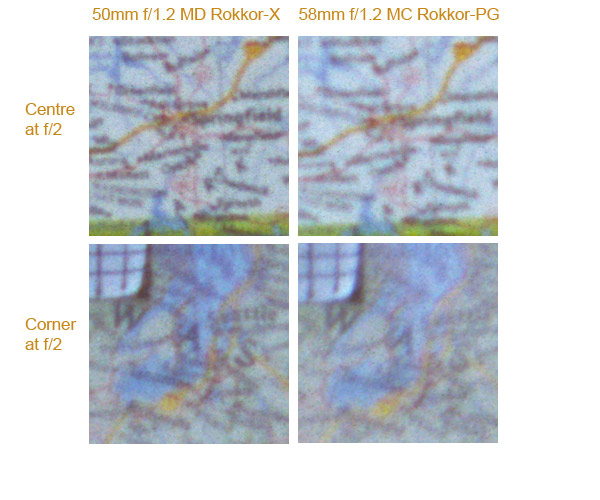
Back in the glory days of the Minolta manual focus system, cameras were normally sold with a 'normal' focal length lens as the standard lens to come with the body. These weren't the poor quality standard zooms that often come packaged with today's cameras, but high quality, single focal length lenses, of between 45mm and 58mm depending upon era and budget.
Many of the questions asked by owners of manual focus equipment relate to these lenses, and include such questions as "What difference is there between the 50mm MD and MC lenses?", "Is the 50mm f/1.2 better than the 58mm f/1.2?", "Will the 50mm f/1.4 be sharper than my 50mm f/1.7?" and innumerable variations upon these themes.
While there are numerous posts in various discussion groups answering these questions and many more, to the best of my knowledge until now no-one has published on the web a comprehensive test of the lenses side by side. Now you, the user, will have the chance to judge for yourself between them.
The lenses tested comprised examples of most of the normal lenses most commonly available, and my thanks go to Bob Flegg and Robert Hoehne for their provision of several of the test lenses for the comparison. The lenses tested were:
50mm f/2 MD
50mm f/1.7
50mm f/1.4 MD
50mm f/1.4 MC Rokkor
50mm f/1.2 MD Rokkor-X
58mm f/1.2 MC Rokkor
In order to compare all of the lenses we will be assessing them in class groups, and then comparing the best lens from each class to find the ultimate winner of all of the lenses. The first lenses examined will be the super-fast lenses, the 50mm f/1.2 MD Rokkor-X and the 58mm f/1.2 MS Rokkor-PG.
An important consideration to remember with these tests is that they should be treated as a guide only, and a general source of information. This is because only one sample of each lens was tested in this review, and there is no way for me to tell if the sample tested was indicative of the average performance of the entire production run. Your 50mm may perform better or worse than the ones shown here, so if this is important to you, you should consider testing your lens yourself to ensure ultimate sharpness.
All tests were performed on a focus calibrated X-570, using a viewfinder magnifier and a tripod, and Fuji Velvia 100F fine grained slide film. The camera's self timer was used to combat vibration. Slides taken have been scanned at 5400dpi, and focus has been individually set for each crop so as to avoid any issues with film flatness. Digital ICE and grain management has been turned off to obtain maximum possible resolution.
50mm f/1.2 MD Rokkor-X
vs.
58mm f/1.2 MC Rokkor-PG

The 50mm f/1.2 MD Rokkor-X and the 58mm f/1.2 MC Rokkor are the two big guns of the Minolta normal lens line up. Expensive and heavy, they have a reputation for being great performers in low light as well as being sharp and contrasty for general photography. Certainly the viewfinder image is a joy to behold when using one of these lenses. However how will they perform in the Ultimate Normal Lens Challenge?
You may have already seen my initial head to head test of these lenses conducted some time ago. In that test they performed effectively on a par against each other, but it was a very basic test, and conducted at a distance of only about 3 feet with files scanned at 2200 dpi. This test has been conducted at a greater distance, more in line with the types of distance that would commonly be used for portraiture or general photography. Additionally, my testing methods have been enhanced since that first test, with images scanned at 5400 dpi, and a more consistent test subject. Additionally, the bokeh and light fall-off of the lenses will be tested, so you can judge for yourself the results in this respect.



















